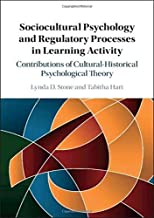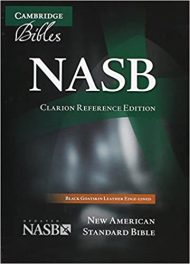 Authors: Lynda D. Stone and Tabitha Hart
Authors: Lynda D. Stone and Tabitha Hart
Publisher: Cambridge University Press – 125 pages
Book Review by: Sonu Chandiram
Dr. Regina Day Langhout, who wrote the Foreword for this book, says this about Lynda D. Stone, one of the two authors of this book:
“What I most appreciate about the work that Lynda presents in this book is the bridging that she continues to do. Lynda encourages us to engage in analysis from a framework that is broader than one person or even a dyad. She wants us to consider not only teacher-student interactions, or even student-student interactions, but also the social, relational, or contextual dimensions that shape what happens in any setting, including a learning space…
Specifically, she demands that we consider children as active co-constructors and co-regulators of any space that they inhabit. In other words, through their agency and actions, they co-configure much of the world. This however, is the paradox: although children have agency, they also experience tremendous levels of subordination, given the current social construction of childhood in the United States.
Moreover, if children also inhabit other social categories related to race, ethnicity, citizenship status, social class, sexuality, and so on, then they are even more inhibited in exercising their agency.”
This book is about how all of us, and in particular children, learn to become successful (and hopefully, effective) in social interactions, has this thematic framework: there are numerous sources of learning (e.g. books, communication and entertainment media) as well as platforms: our parents, siblings, members of our larger family, school teachers, guidance counselors, classmates, and much more.
Moreover, some of these sources and platforms reinforce what we have learned before, while others contradict them, and this happens throughout our lives. The system of values we develop, and the level of success we attain in obtaining what we desire (adulation, love, friendship, money, respect, etc.) will depend upon what values we adopt or reject.
This book also takes deep dives into the psychology of learning and reinforcement of values, and informs us what types of interactions make lasting impressions upon us as we are growing.
The list of this book’s chapters provided below gives you the extent of topics covered in it:
- Introduction
- Self-Regulation in Learning Communities: A Concept in Transition
- Self-Regulation in Social Contexts
- From Self-Regulation to a Dynamic Interplay of Regulatory Processes
- Cultural Processes and Regulatory Processes
- Cultural-Historical Psychological Theory
- Fundamental Principles of Human Development
- Regulatory Processes in Cultural-Historical Psychological Theory
- CHAT and the Emergence of Regulatory Processes in Activity
- The Relational Habitus and Regulatory Processes
- Inter-subjectivity: Beyond Consensus
- Relatedness and the Relational Habitus
- Relationship with Others
- Relationship to Tools
- Relationship to Tasks
- Relational Habitus: In Formal and Informal Learning Arenas
- Relational Habitus in Mr. Minton’s Classroom
- Relational Habitus in a Playful Learning World
- Practical-Moral Knowledge and Regulatory Processes
- Social Order: Implicit and Emergent
- Moral Order: Implicit and Emergent
- Toggle Pattern of Shifts: Other-Regulation and Self-Regulation
- Dynamic Shifting Pattern: Co-Regulation to Self-Regulation
- Influences of PMK on Behavioral Regulation
- Identity and Competence Woven Together Through Regulatory Processes
- Social Identities: Explicit and Implicit
- Inhabiting a Social Identity: Attaching to Social Categories
- Inhabiting an Identity of Competency: Formal and Informal Learning Arenas
- A Formal Learning Arena: Ms. Winter’s Classroom
- An Informal Learning Arena: The Magical Web in the 5th Dimension
- Contextual Mood and Regulatory Processes
- Stance-taking and Mood
- Emergence of a Contextual Mood
- Emergent Mood and the Regulation of Attention
- Problem-Solving Mood and Collaboration
- Collaborative Problem-Solving Mood Sustained
- Conclusion
An enlightening and insightful book to say the least, it is well worth a good read
Authors:
Lynda D. Stone is Professor of Child and Adolescent Development at California State University in Sacramento, California, where she has received awards for Outstanding Teaching and Community Service. Her research examines teaching-learning practices, with attention to learners from non-dominant communities
Tabitha Hart is Associate Professor of Communication Studies at San Jose State University in San Jose, California. Her research areas include speech codes theory, ethnography of communication, and technology-mediated communication.






